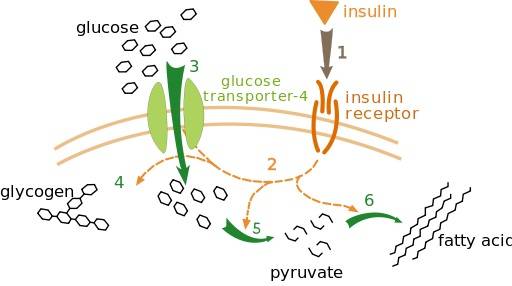It was 3:54pm. The dim fluorescent lights of Whole Foods bathed me in their gloomy light. People walked past, acting as if they hadn’t noticed my despair and torment. I sat, knees drawn into my chest, rocking back and forth in the fetal position, muttering, “I’ve destroyed my insulin sensitivity. My workout will be ruined,” over and over again. Two minutes ago I had accidentally eaten a handful of grapes whilst perusing the cold meats aisle, looking for some nitrate-free bacon, forgetting that I wasn’t meant to have any carbohydrates until post-workout for fear of switching my body’s preferential fuel source from fats to carbohydrates. Now I knew I’d be sluggish and tired during my workout, all because of those damned grapes.
For those of you who don’t know, this is the primary rationale behind nutritional systems such as Carb Back-Loading (CBL) and the Renegade Diet (RD). First you fast. Depending on your goals (fat loss, muscle gain, or maintenance) fasting can last from anywhere between twelve to fifteen hours. Then, you eat one or two meals consisting of approximately a cup of vegetables, accompanied by fats and proteins pre-workout. Post workout just eat until there’s nothing left in the fridge and your wife threatens a divorce if you step out of the house in the pouring rain to buy another grass-fed steak and a box of Cocoa Bombs from the supermarket. The largest difference between the two programs comes in the re-feed stage. Ferrugia recommends white rice, sweet potatoes, and white potatoes. Keifer suggests apple turnovers, Wendy’s fries, and donuts.
At their core, both of these two programs are the same. Both Ferrugia and Keifer believe that when we wake to the blaring of an alarm clock our cortisol levels rise, leading to an appropriate stress response. When we rise, we also get a surge of growth hormone, unless you eat the typical American breakfast of cereal or toast, which releases insulin into the bloodstream. This insulin effectively switches off our growth hormone production, so our body stops burning fat and starts storing it instead. Furthermore, our bodies are always under constant stress due to training and eating. This activity leads to an increase in IGF-1 (insulin-like growth factor), which is a cancer-causing hormone. Fasting allows our body to rest and reduces IGF-1 whilst increasing growth hormone.
Renegade Diet
Created by Jason Ferrugia, the Renegade Diet is by far the most comprehensive one. Now, before all the PubMed warriors start their Google searches let me explain that Ferrugia acknowledges that his program is heavily based on broscience from decades of studying his digestive system and those of his clients.
The Renagade Diet advocates drinking a glass of warm lemon juice every night before dinner, abstaining from legumes, wheat, and gluten, fasting for twelve to sixteen hours, and then staying further away from carbohydrates than I do a Frey wedding (yep, not done with the Red Wedding just yet) until post workout the following day.
 For me, the biggest take away was the focus on gut health. There is the acknowledgement that you will most likely be packing away an insane amount of food post workout, and therefore Ferrugia tries to ease this by implementing some of the aforementioned gut health strategies: glass of warm lemon juice pre-dinner, no legumes, no grains, and no wheat. As he mentions, if your gut health is not 100% then the food you are eating will not be properly absorbed into your bloodstream and distributed into your muscles, therefore holding back you and your results.
For me, the biggest take away was the focus on gut health. There is the acknowledgement that you will most likely be packing away an insane amount of food post workout, and therefore Ferrugia tries to ease this by implementing some of the aforementioned gut health strategies: glass of warm lemon juice pre-dinner, no legumes, no grains, and no wheat. As he mentions, if your gut health is not 100% then the food you are eating will not be properly absorbed into your bloodstream and distributed into your muscles, therefore holding back you and your results.
The Renegade Diet is a simple and easy to follow program that goes into great depth without too much confusing science behind it. As you read the program, you’ll find yourself nodding along and beginning to understand how Ferrugia can claim to fix everything with some caloric manipulation.
In the end, the Renegade Diet are for those who:
- Have plateaued
- Struggled with digestion
- Need to kick start fat loss
- Are bored of calorie counting
- Need to fix low testosterone levels
- Have high estrogen levels
- Suffer from adrenal fatigue or high cortisol levels.
Carb Back-Loading
Imagine a world where you can eat dessert, and I don’t mean a high protein, low carb, high fiber, no-bake, organic pancake that took you two hours in the supermarket to find the ingredients for and then another one hour to cook and half way through you nearly burnt your house down in a blind rage but then remembered that the fitness “athlete” who recommended the recipe on Facebook said it was really good so you persevered. I mean a double chocolate fudge ice cream cake topped with whipped cream.
This is the world Keifer of Dangerously Hardcore has created with Carb Back-Loading. Fast from dinner to 10:00 or 11:00am the next day, but drink a shake of fats and protein on waking to aid ketogenesis and prevent catabolism, then eat one or two meals pre training, consisting of mainly proteins and fats. Post training eat all the trashy carbs you can until you collapse into a carb coma so deep that Rip Van Winkle would be jealous.
CBL focuses more on the science. Keifer advocates that a calorie is not just a calorie and that by using Modulated Tissue Response (a term Keifer has trademarked), we can teach our bodies to select which tissues grow and which ones shrink (e.g. gain muscle whilst losing fat) by teaching it to grow in accordance to a stimulus – weights.
 Another concept covered in CBL is GLUT transporters, glucose transporters that shuttle glucose to working muscles, particularly GLUT-4 and GLUT-12, which are present in skeletal muscle and fat cells. Normally, eating carbohydrates leads to increased activity of both – biceps get bigger but love handles do too – but by exercising without carbohydrates, our body is tricked into mimicking an insulin response, shuttling glucose into the working muscle, leading to growth without the fat.
Another concept covered in CBL is GLUT transporters, glucose transporters that shuttle glucose to working muscles, particularly GLUT-4 and GLUT-12, which are present in skeletal muscle and fat cells. Normally, eating carbohydrates leads to increased activity of both – biceps get bigger but love handles do too – but by exercising without carbohydrates, our body is tricked into mimicking an insulin response, shuttling glucose into the working muscle, leading to growth without the fat.
My time Carb Back Loading was glorious. The only thing more wondrous I could imagine would be riding a unicorn over a sunset towards a field filled with bacon roses. Alas, I paid the price for my nights explaining to my wife why I had to eat six lamingtons, a bowl of Cocoa Bombs, two sweet potatoes, and four Skinny Cow ice cream cookies. My LDL cholesterol rose and so did my triglycerides.
Apparently they didn’t care too much for Keifer’s science.
Carb Back-Loading is for those who:
- Are tired of traditional clean foods.
- Want to experiment.
- Enjoy the science (CBL is a lot heavier on science that RD and goes into detail on a lot of different studies conducted).
- Need a psychological break from dieting.
- Are already in good health – due to the crap loading, I’d never recommend it to someone who is already suffering from medical problems.
The Final Word
Both Carb Back-Loading and the Renegade Diet are efficient and easy programs to cover. It makes eating easier and more convenient and both creators have a slew of anecdotal evidence to support their claims.
Whilst Carb Back-Loading was fun, I hit a psychological wall where I became bored of the junk I was eating and instead started to crave healthier, more organic foods. For that reason, for those you are looking to get started with a new dietary program, Ferrugia’s Renegade Diet is the way to go.
References:
1. Jason Ferrugia, Renegade Diet (2011), USA
2. John Keifer, Carb Back-Loading (2011), USA
Photos 1&2 courtesy of Shutterstock.
Photo 2 by XcepticZP at en.wikipedia [Public domain], via Wikimedia Commons.






